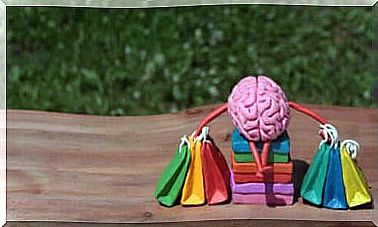Two Counterintuitive Problem Solving Strategies

When we talk about counterintuitive strategies, we are referring to methods that conflict with what intuition tells us but which ultimately work against all odds. They are born from the idea that what we think is common sense sometimes deceives us.
It is common to start from the idea that superficial logic is the key that opens all doors, that solves all problems. There are some reasonable steps, ranging from the identification of the difficulty, through the approach of possible solutions, to the process of weighing up and choosing the most appropriate one.
However, sometimes this doesn’t work. However much we follow the sequence, we are not able to come up with a good plan. This is where counterintuitive strategies can go a long way toward unlocking us and solving the problem at hand.
Counterintuitive Strategies
Faced with problems, especially when they affect us emotionally, we tend to adopt defensive strategies, focused on deficiencies, absences or difficulties. We started from the idea that, thinking about them and rethinking them, we will find a viable solution. This, however, usually guarantees a feeling of anguish.
Anxiety is not the best counselor. When we go back to the same problem and find no reasonable solutions, this is more likely to increase our anguish and cause what we call mental fog: our brains become saturated. Sometimes the lack of solutions also leads to new problems.
On many occasions, the brain needs enough patience to come up with strategies that we don’t use. A new situation can make existing routes useless. At this point, it might be a good idea to adopt counterintuitive strategies. Following are two of them.

1. Blur instead of concentrate
This is the opposite way of focusing all our attention on the problem. To solve something, we must focus on the problem until we fully understand it and find a way out. However, within the framework of counterintuitive strategies, we find the solution to a problem when we leave it in the background.
In many cases, what is recommended is to try to blur. This means leaving the weight of the difficulty unresolved. Instead of trying to structure a solution, the idea is to disperse it. This is accomplished by first moving away from the problem.
Second, broaden your perspective. To do this, we can talk to others who may have faced a similar difficulty. Talking to someone who has successfully used a new strategy will certainly give us an extra dose of security, sometimes needed.
On the other hand, sometimes someone proposes an absurd and inapplicable solution, but their vision ends up igniting the flame of a good idea to leave the place.
It is very likely that when you unfocus, you will get up so that the anxiety is reduced. A calm mind is much more capable of finding viable ways to overcome mental obstacles.

2. Exaggerate as much as possible
The second of the counterintuitive strategies is to use hyperbole, or exaggeration, constructively. The idea is to oversize the problem. This means assuming that its effects and consequences are as serious as they could be. The aim, in this case, is also to adopt a new perspective.
The mental exercise of exaggerating a problem is something that, in itself, helps to see it in more detail and, perhaps, to find aspects that had not been seen before. Therefore, in this effort to exaggerate as much as possible, it is possible that the situation will be better understood and the key points detected more accurately.
This is one of the counterintuitive strategies that, in one way or another, add to the pressure. However, in this case, this pressure can help us. It can help us to better frame our thinking, without causing the same effects that anxiety would generate.
These two counterintuitive strategies are particularly useful when we are faced with intriguing problems. They are also indicated when faced with problems that we have already thought about a lot, without finding solutions.









